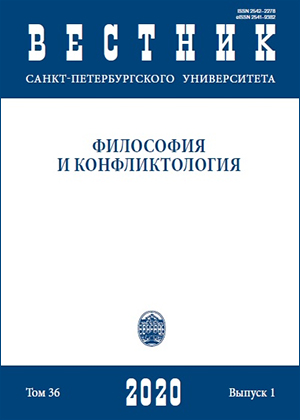Биология, среда и культура: от коммуникации животных к человеческому языку и познанию
DOI:
https://doi.org/10.21638/spbu17.2020.113Аннотация
Противоречия в интерпретации данных различных наук, занимающихся антропогенезом и происхождением языка, невозможно преодолеть без комплексного междисциплинарного подхода. Важной задачей такой конвергенции является обеспечение комплементарности теоретических взглядов на проблему, что может быть достигнуто только при наличии общего языка ее описания. Человеческий язык — видоспецифичная способность мозга, дающая возможность не только выстраивать сложные коммуникационные сигналы, но и обеспечивать мышление. Язык характеризуется системой базисных универсальных правил, обусловленных, по всей видимости, свойствами самого мозга, с иерархически организованными уровнями — лексикон, грамматика (морфология, синтаксис, семантика и фонология) и прагматика. Многозначность — свойство любого сложного информационного потока, независимо от модальностей восприятия — особенно ярко проявляется в языке. Именно благодаря произвольности и многозначности человеческий язык является не только средством коммуникации, но и важным инструментом познания. Механизмы, обеспечивающие язык и другие высшие функции, рассматриваются в рамках то локализиционистской, то холистической моделей. Парадигмы продолжают сосуществовать или чередоваться, и основные дискуссии происходят между сторонниками идеи модульной языковой способности человека, базирующейся на лежащей в основе всех языков врожденной универсальной грамматике, и приверженцами коннекционистской модели, согласно которой основой развития языка является обучение нейронной сети, что сближает взгляд на язык с подходами к изучению иных видов коммуникаций. Эволюция привела к обретению мозгом способности к вычислению, использованию рекурсивных правил и ментальных репрезентаций, создав основу для мышления и языка в человеческом смысле. Мы сталкиваемся с оппозицией школ, сводимой к схеме детерминизм/врожденность языка против модели научения на основе частотностей, прогноза и предсказуемости. Статья разбирает свойства когнитивных процессов, характерных для человека, и их возможные предпосылки на примере других биологических видов.
Ключевые слова:
эволюция языка и сознания, системы коммуникации у животных, происхождение и эволюция человека, обработка информации в условиях неопределенности
Скачивания
Библиографические ссылки
Загрузки
Опубликован
Как цитировать
Выпуск
Раздел
Лицензия
Статьи журнала «Вестник Санкт-Петербургского университета. Философия и конфликтология» находятся в открытом доступе и распространяются в соответствии с условиями Лицензионного Договора с Санкт-Петербургским государственным университетом, который бесплатно предоставляет авторам неограниченное распространение и самостоятельное архивирование.






